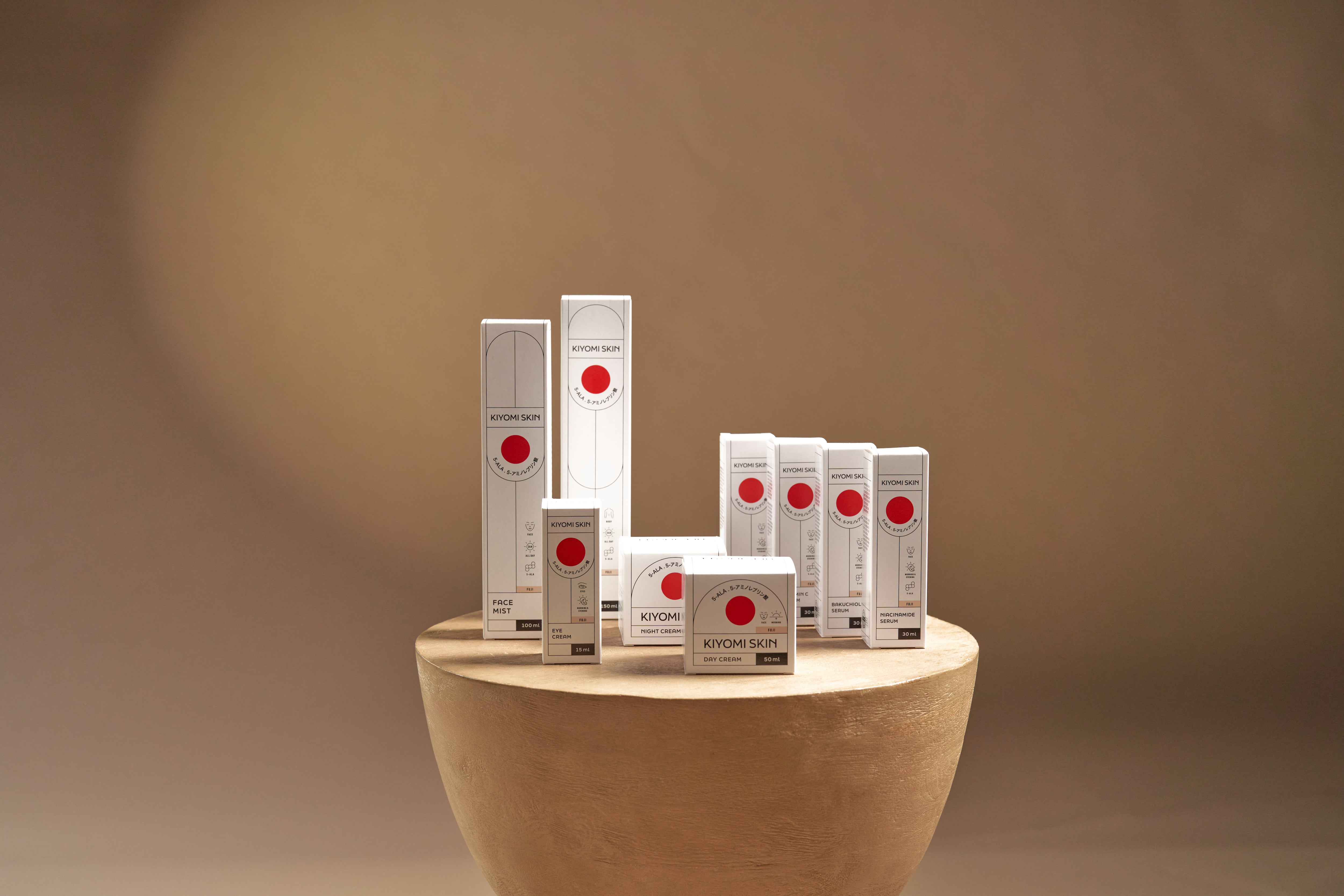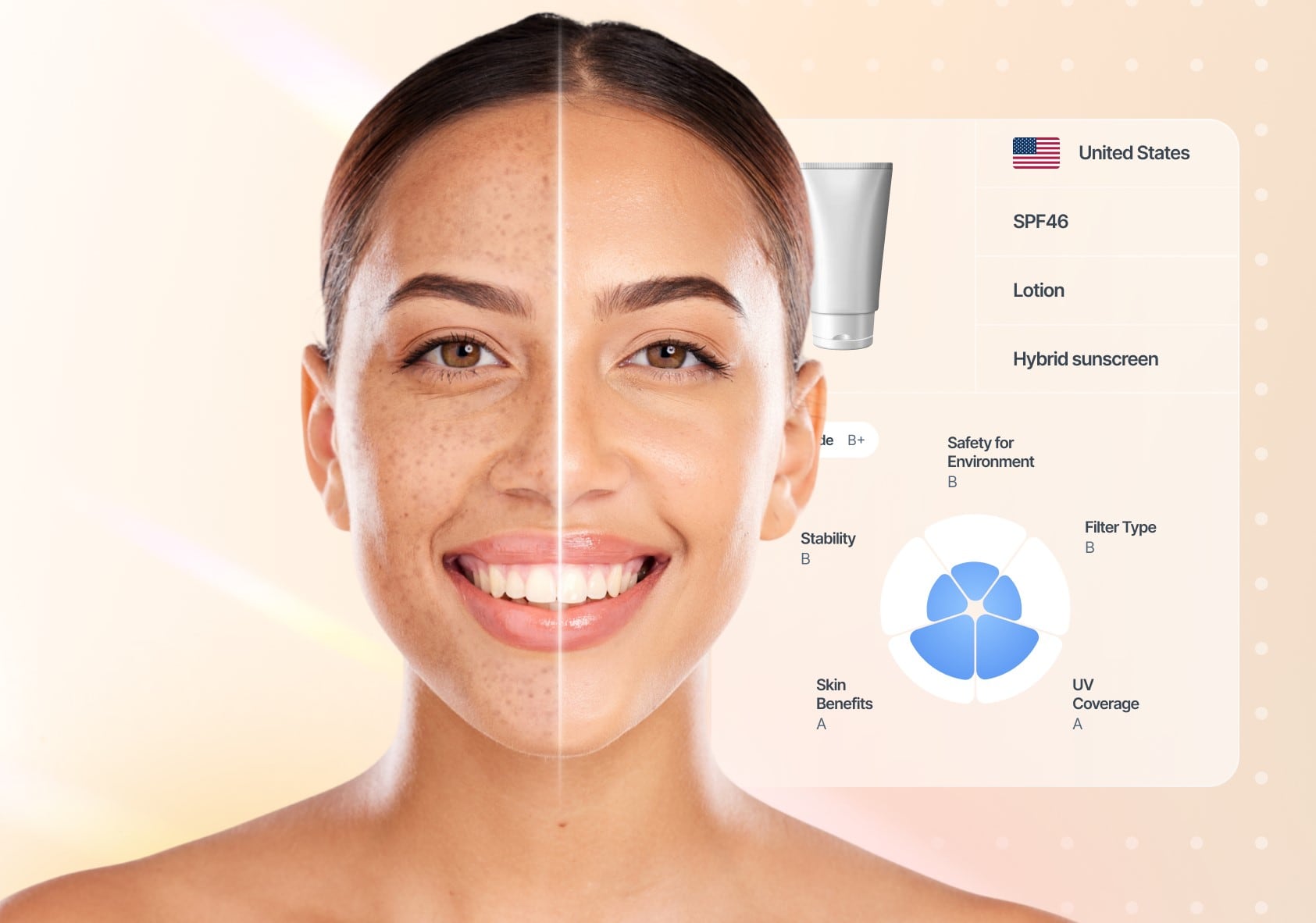The Japanese-inspired, German-made facial skin care brand is positioning itself at the forefront of science-driven beauty and, according to its CEO Daniel Struve, is the first brand to bring 5-ALA to market in a skin care product.
The skin care ingredient has been studied for its ability to support collagen production and improve skin hydration and elasticity, yet it has remained largely untapped in consumer skin care ranges.
As a unique amino acid, 5-aminolevulinic acid is already present in human cells and has previously shown clinically significant improvements in skin moisture and wrinkle depth in controlled studies.
We spoke to Struve to find out why the brand has decided to formulate with this ingredient…
Cosmetics Design-Europe (CDE): What does 5-aminolevulinic acid (5-ALA) do for the skin?
Daniel Struve (DS): 5-aminolevulinic acid (5-ALA) is a naturally occurring compound valued in skin care for its visible rejuvenating and anti-ageing benefits. When used in cosmetic formulations, 5-ALA phosphate helps improve the appearance of dull, tired-looking skin, promoting a more radiant, hydrated, and youthful complexion. Regular use can enhance the look of skin firmness, smoothness, and overall resilience, helping to reduce the appearance of fine lines and other signs of ageing. Its revitalising properties support healthier-looking skin and contribute to a fresher, more energised appearance.
Naturally produced in the body, 5-ALA plays a role in several essential biological processes as a precursor in the synthesis of haem – a component involved in various cellular functions. It supports mitochondrial function and boosts cellular energy production (ATP synthesis).
As a result, 5-ALA helps promote faster skin regeneration, improved firmness, and resilience. Many visible signs of ageing occur when cells lose energy due to declining ATP levels. Since 5-ALA plays a key role in ATP production, it helps restore cellular vitality.
Additionally, this metabolic process also generates metabolic water, a highly effective form of internal hydration that enhances the skin’s moisture levels from within. While these internal processes are part of the body’s natural physiology, in topical cosmetic products, 5-ALA is used specifically for its benefits to the skin’s visible condition and overall appearance.
CDE: Is there clinical research to prove this?
DS: Yes, numerous studies have highlighted the positive cosmetic effects of 5-ALA, including its role in promoting skin renewal. Notably, a double-blind study published in a Japanese health magazine in 2020 concluded that cosmetics containing 5-ALA improved skin moisture levels and reduced the appearance of wrinkles when applied twice daily.
Additionally, we conducted our own instrumental testing with our products and observed impressive results. After 28 days of regular use, our 5-ALA + Vitamin C Serum increased skin density by an average of 45%, while our Moisturising Serum reduced wrinkles by an average of 19.8%. Our Niacinamide Serum increased skin hydration by an average of 35% after 14 days of regular usage.
CDE: Why has the ingredient remained largely untapped if there are so many benefits?
DS: While our group has held the patent for 5-ALA phosphate as a cosmetic ingredient for over 20 years, it remained unavailable in the EU and US markets, mainly due to differing regulatory requirements and its strong historical ties to the pharmaceutical field. Additionally, 5-ALA phosphate is a tricky molecule, requiring advanced formulation expertise to deliver consistent performance in topical skin care.
In the medical space, a different form – 5-ALA hydrochloride (5-ALA HCl) – has been used in prescription treatments, leading many to overlook the cosmetic potential of 5-ALA phosphate. However, the two forms differ significantly in both characteristics and intended application.
Our cosmetic formulations use 5-ALA phosphate at low concentrations alongside iron, allowing it to work in harmony with the skin’s natural processes. This innovative approach helps enhance skin vitality and promote a healthy-looking, refreshed complexion, without the need for light activation or drug-like mechanisms.
With over two decades of R&D behind us, we’ve successfully adapted this ingredient for topical cosmetic use, opening new possibilities for advanced skin care performance.
CDE: How long has Kiyomi Skin been working on this formulation?
DS: We dedicated approximately one year to developing our initial formulations. Fortunately, our Japanese colleagues had already introduced the first cosmetic products to the Japanese market, providing us with valuable insights and a solid foundation. We adjusted certain ingredients to meet EU and US regulatory standards and have since developed our own unique product formulations.
In the process, we focused on integrating the latest trend ingredients backed by strong scientific evidence. Our philosophy is to include only ingredients that offer real benefits to the skin – never for production ease or marketing claims. That’s why we avoid perfumes and whitening powders, which do not contribute to skin health. Additionally, we use only a minimal selection of essential base ingredients to ensure a shelf life of six months after opening, without compromising the product’s purity or performance.
CDE: What kinds of challenges did you face when formulating with 5-ALA?
DS: We greatly benefited from the expertise of our Japanese colleagues, who developed and patented a method for producing 5-ALA phosphate. In the pharmaceutical sector, 5-ALA is typically used in its hydrochloride form, which is unstable in water. Since water is a key component in most cosmetic formulations, the commonly available 5-ALA HCl was not suitable for our needs. Fortunately, having access to the more stable 5-ALA phosphate gave us a crucial advantage and solved what would have otherwise been our biggest challenge.
Other important steps included determining the optimal concentration of 5-ALA phosphate in combination with the iron complexes and ensuring product safety. We didn’t rely solely on the standard safety assessments required for cosmetics; we went further by conducting additional tests. For example, we evaluated potential interactions with UV light, given that certain metabolites from 5-ALA without the presence of iron can be light-activated in pharmaceutical applications.
Additionally, all of our products underwent dermatological testing, including Dermatest® evaluations on sensitive skin. We are proud to have achieved “excellent” results across the board.
Ultimately, we carried out extensive testing to confirm both the safety and efficacy of our formulations, ensuring that all product claims are backed by solid study data.
CDE: What regulatory issues needed to be considered for 5-ALA?
DS: Our journey began in Germany, where we successfully navigated the complete process of developing a safe and fully compliant cosmetic product under European regulations. The EU is widely recognised for having some of the most comprehensive and safety-focused cosmetic laws in the world, particularly in terms of consumer protection and ingredient safety. For example, the EU restricts or bans nearly 1,700 ingredients, in contrast to fewer than 20 in the US.
This high regulatory benchmark has worked in our favour: meeting EU requirements has positioned us strongly for entering the US market and aligning with FDA and MoCRA guidelines. As mentioned earlier, we conducted testing well beyond what is legally required not only to ensure product safety and quality, but also to proactively eliminate any potential regulatory concerns.





